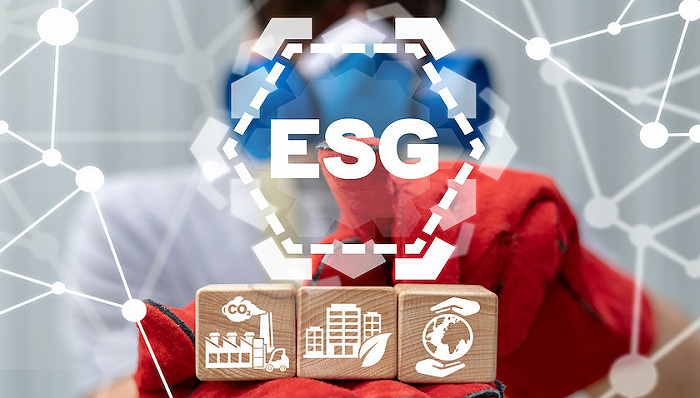CBNPerspective丨DeepSeekaftermath:Sho
Hello! Welcome to the new CBN Perspective. I’m Stephanie Li.
Roughly a week before this year's Spring Festival, Chinese AI startup DeepSeek released its latest open-source model R1, which boasts a technological breakthrough in leveraging pure deep learning methods to allow AI to spontaneously emerge with reasoning capabilities.
The surge of DeepSeek, a two-year-old Hangzhou-based startup creating open-source large language models at much lower costs than foreign peers, has not only led to rising global investor interest in Chinese artificial intelligence companies, but also their bullish outlook on the Chinese tech sector in general.
Soon after DeepSeek roaring across the horizon, the so-called “Hangzhou six small dragons" have made a even bigger splash. These six innovative enterprises - Yun Shen Chu Technology, Unitree Robotics, DeepSeek, Game Science, Qunhe Technology and BrainCo - are making waves not only in the domestic market but also on the global stage.
The question then arises: why did these "small dragons" emerge in Hangzhou? The answer lies in a confluence of favorable factors, with the city's tolerance and patience for innovative enterprises standing out prominently.
In the realm of technological innovation, the gestation period for groundbreaking ideas to translate into market-viable products can be protracted. Take, for example, BrainCo, which is dedicated to brain-computer interface technology. Developing high-precision and portable brain-computer interface products demands substantial investments in both capital and technological Ramp;D over extended periods, with minimal short-term economic returns in sight. However, Hangzhou has provided a nurturing environment for such enterprises.
Local pro-innovation policies play an indispensable role. For companies like BrainCo, Hangzhou offers preferential tax policies. They are exempt from certain local taxes in their initial years of operation, allowing them to allocate more resources towards research and development.
Moreover, Hangzhou has established a series of innovation parks and incubators, such as the renowned Hangzhou Future Sci-Tech City. Here, innovative enterprises can enjoy rent-free or highly subsidized office spaces for the first three to five years. This not only reduces their operational costs but also provides a collaborative ecosystem where they can exchange ideas with other like-minded companies and research institutions.
In terms of financial supports, Hangzhou provides low-interest loans specifically tailored for technology-intensive startups. These loans have a longer repayment period, typically extending up to 10 years, which eases the financial burden on enterprises during their formative and Ramp;D-intensive stages.
But more importantly, Hangzhou's academic-industry collaboration is a driving force behind its success. Institutions such as Zhejiang University of Science and Technology work closely with local firms, bridging talent gaps and promoting applied research. Through alumni networks and strategic partnerships, a steady pipeline of skilled professionals is ensured, providing the human capital necessary for sustained growth in AI and robotics.
While Hangzhou captures all the spotlights as a burgeoning center for AI and robotics, it‘s challenging the long-held dominance of Shenzhen, China's traditional tech and innovation powerhouse.
Shenzhen, where Tencent and Huawei are based, came under even harsher social scrutiny. Has the southern tech hub “lagged behind” in the latest AI boom?
This development is not merely a local phenomenon but a significant chapter in China's broader narrative of technological advancement. As Hangzhou's influence grows, it offers both competition and opportunities for collaboration with Shenzhen, providing valuable lessons for the future of China's tech industry.
Shenzhen has long dominated sectors such as consumer electronics, semiconductors, and fintech, with global leaders like BYD, Tencent, and Huawei driving innovation. And Hangzhou's emergence introduces a new dynamic of complementary competition.
Shenzhen's strength in hardware manufacturing could synergies with Hangzhou's advancements in AI software, creating new opportunities for collaboration. At the same time, Hangzhou's focus on AI-driven industrial automation may push Shenzhen to innovate further, maintaining its competitive edge.
This development also signals a shift in China's tech landscape towards a multi-hub model. While Shenzhen retains its leadership in scale and diversity, Hangzhou excels in specialized domains. This regional balance encourages both cities to focus on their respective strengths while fostering collaboration to drive overall technological progress.
For Shenzhen, Hangzhou's success offers valuable lessons. First, strengthening academic-industry ties is crucial. Shenzhen should emulate Hangzhou's model of university-alumni-industry collaboration to cultivate talent tailored to emerging fields.
Second, investing in niche innovation could be a game-changer. Shenzhen's broad tech base could benefit from supporting specialized clusters, similar to Hangzhou's robotics firms. Expanding initiatives like the Hetao Shenzhen-Hong Kong Science Zone to include AI and robotics incubators could provide a fertile ground for innovation.
Additionally, Shenzhen could adapt its fintech regulatory sandbox for AI and robotics, offering startups flexible testing environments while ensuring ethical standards.
While Shenzhen's position as a comprehensive tech hub remains strong, it must adapt by fostering deeper specialization, enhancing Ramp;D ecosystems, and embracing cross-regional collaboration. The emergence of tech hubs like Hangzhou ultimately strengthens China's overall technological competitiveness, pushing cities to innovate rather than merely compete.
As China's tech landscape continues to evolve, the interplay between competition and collaboration will be crucial in shaping the future of the industry.
Executive Editor: Sonia YU
Editor: LI Yanxia
Host: Stephanie LI
Writer: Stephanie LI
Sound Editor: Stephanie LI
Graphic Designer: ZHENG Wenjing, LIAO Yuanni
Produced by 21st Century Business Herald Dept. of Overseas News.
Presented by SFC
声明:以上内容为本网站转自其它媒体,相关信息仅为传递更多企业信息之目的,不代表本网观点,亦不代表本网站赞同其观点或证实其内容的真实性。投资有风险,需谨慎。
我来说两句
推荐阅读
-
中国银行:下半年我国经济或快速复苏,全年增长4%左右图片来源:人民视觉中国银行研究院周二发布《2022年三季度经济金融展望报告》称,下半年我国宏观经济或将进入快速复苏通道,...
-
上财:今年中国经济或增长4.3%,需高度关注青年就业2017年10月25日,西安,长安大学校园内,学生们在秋雨中现场求职。图片来源:人民视觉上海财经大学高等研究院本周发布报...
-
央行报告:2021年企业贷款利率创新低,东北降幅最大2022年6月13日,辽宁沈阳,工人在水发航宇星物联科技(辽宁)有限公司生产线上制造安全控制型膜式燃气表。图片来源:人民...
-
一个月股价大涨近50%,东瑞股份加大押注“猪周期”,定增图片来源:图虫创意7月8日(周五),东瑞股份(001201.SZ)股价收于44.90元,涨7.78%,自5月30日以来其...
-
太阳能行业周报:产业链价格齐涨硅料涨势将延续多晶硅价格硅业分会和PV-InfoLink数据显示,本周全国单晶致密材料成交均价为28.96万元/吨,较前一周上涨1.9...
-
种业专家创新大讲堂在京成功举办7月9-10日,由中国农业科学院主办,人力资源和社会保障部、农业农村部联合主办的专家创新大讲堂在北京举行。本次大讲堂以“...
-
“20恒大01”本息兑付再展期议案未获债券持有人投票通过7月11日上午,恒大地产发布公告称,《关于调整“20恒大01”债券本息兑付安排的议案》未获债券持有人大会通过。恒大地产表...
-
城市圈乘车码互通刷码乘地铁哪家强?2017年起,公交码成为公交、地铁的标配。深圳地铁依然“孤傲”地实现北上广深的互通。三年前,上海地铁MetroMetro...
-
乘联会6月新能源汽车销量榜:比亚迪、特斯拉、五菱前三,问2022年6月全国乘用车市场分析报告显示,2022年6月新能源乘用车批发销量达到57.1万辆,同比增长141.4%,环比...
-
Minisforum介绍新款UM560迷你主机,支持US今年6月,Minisforum发布了新款UM560miniPC,搭载AMD6核R55625U处理器,支持USB-C一线连...
作者信息
 壹品财富
壹品财富














